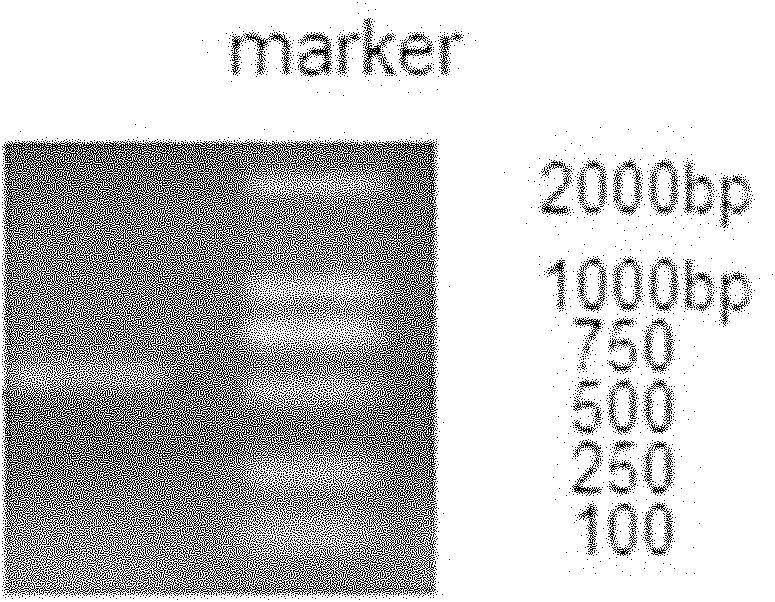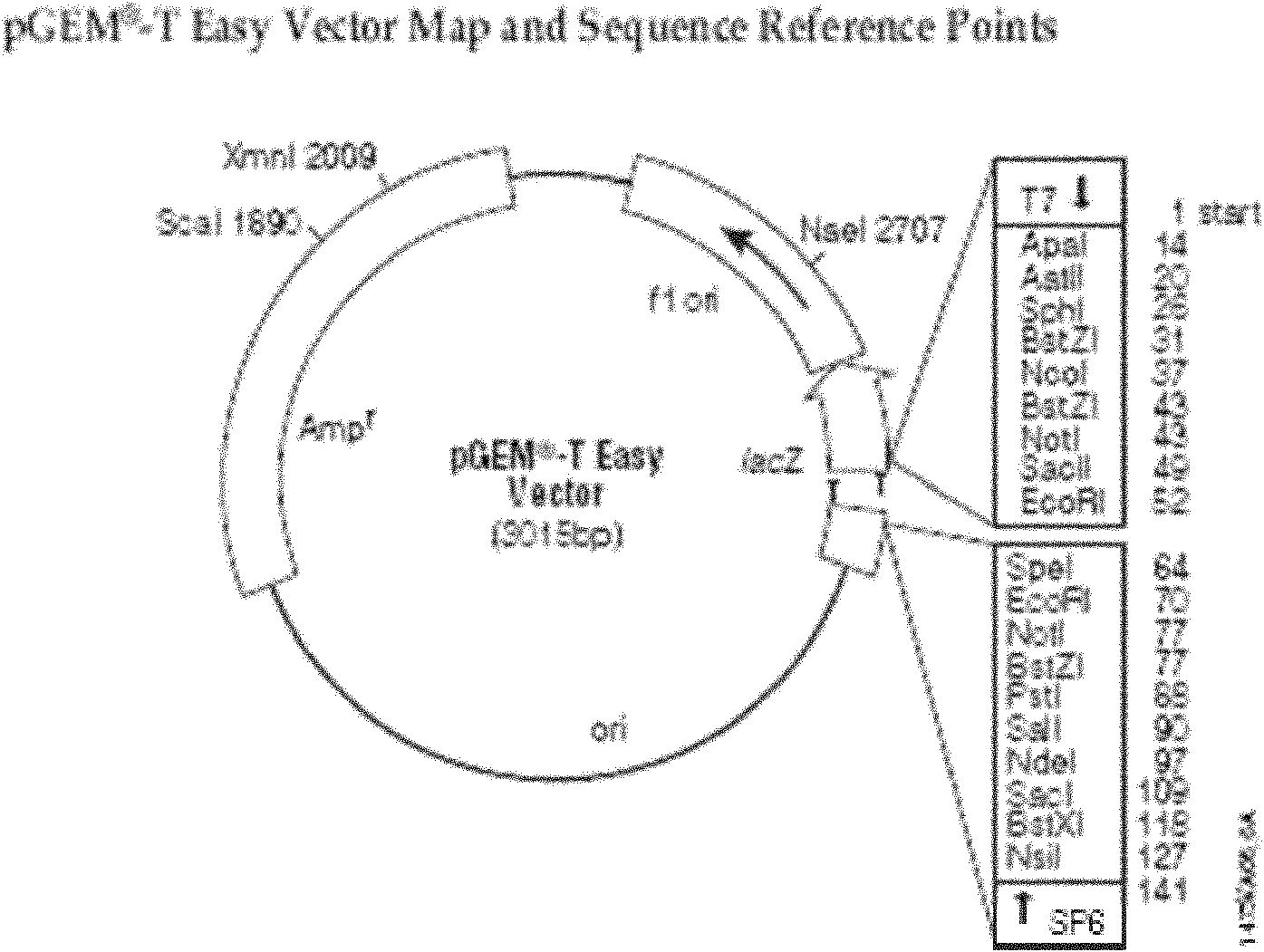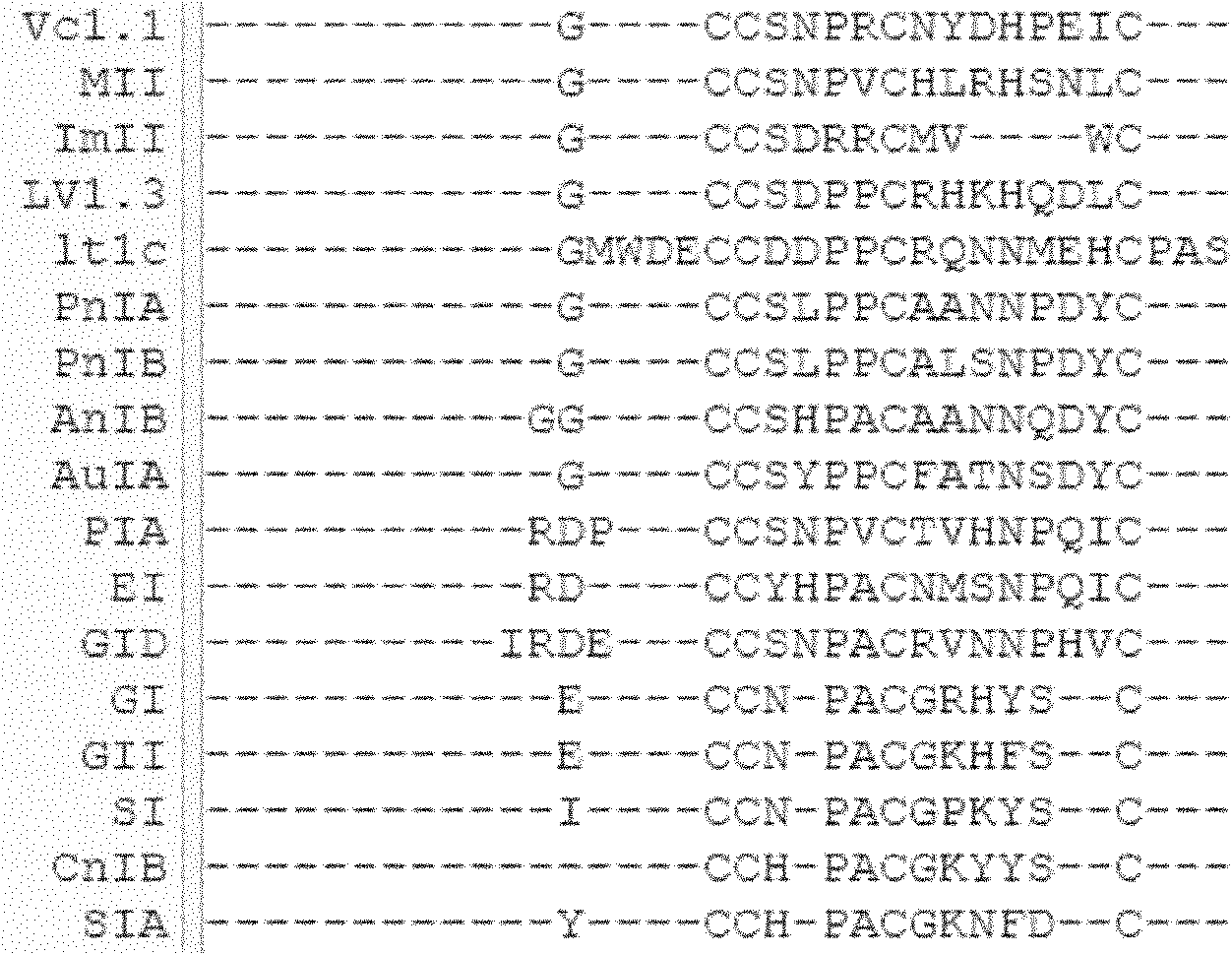Conus lividus neurotoxin and coding sequence and use thereof
A technology of neurotoxin and wart pickle, which is applied in the field of polypeptide and its coding sequence and application, can solve the problems of relatively little research on insectivorous cone snail venom, and achieve the effect of excellent drug effect and inhibition of transmitter transmission
- Summary
- Abstract
- Description
- Claims
- Application Information
AI Technical Summary
Problems solved by technology
Method used
Image
Examples
Embodiment 1
[0023] Example 1: Extraction of total RNA from wart venom tube tissue and cloning of toxin cDNA
[0024] The extraction of total RNA refers to the method of Gibcol BRL company LS reagent instructions were carried out. Taq DNA polymerase, 10×PCRBuffer and dNTP were purchased from Dingguo Company; PCR primers were synthesized by Invitrogen Company; other organic reagents were domestic analytical reagents and were purchased from Guangzhou Chemical Reagent Factory.
[0025] Take live snails, break the snail shell with a masonry hammer to expose the snail meat, carefully and quickly separate the poison tube tissue on ice, weigh it, quickly put it into liquid nitrogen and grind it fully, add 15 times the weight volume of LS reagent (that is, add 15ml to 1g of tissue), fully homogenize in an ice bath, and store in a -80°C refrigerator for extraction of total RNA. Take 50-100mg tissue sample, use 0.75ml Homogenize the LS reagent and let stand at 15-30°C for 5 minutes. Then add ...
Embodiment 2
[0054] Example 2: Determination and Analysis of Neurotoxin Gene lv1.3 Sequence
[0055] The neurotoxin gene lv1.3 was cloned and sequenced from the cDNA library of Cono snail venom tube in South China Sea constructed in Example 1. The neurotoxin gene lv1.3 is a highly expressed gene. The base sequence of the neurotoxin gene lv1.3 was analyzed by using the tool software SEQTOOL, and its maximum reading frame was obtained, with a length of 195bp, encoding a precursor peptide of 65 amino acid residues. Further analysis showed that the amino acid residues 1-21 of the precursor peptide were its signal peptide region, and its 48th residue was arginine, which could be considered as a standard proteolysis signal. Mature peptide fractions are separated. In addition, in most conotoxins, the glycine residue at the end of the precursor peptide is often excised during the post-translational modification process, providing an amidation modification signal for the previous amino acid residu...
Embodiment 3
[0056] Embodiment 3: the solid-phase chemical synthesis of polypeptide lv1c
[0057] The solid-phase chemically synthesized neurotoxin lv1c sequence is GCCSDPPCRHKHQDLC* (* indicates amidation modification), the molecular weight is 1795.4 Daltons, the first and third cysteines in the molecule form a pair of disulfide bonds, and the second and third cysteines form a pair of disulfide bonds. Four cysteines form another pair of disulfide bonds. The instrument synthesis strategy was adopted, using the FmocPHOBtPDCC method, Rink resin and Fmoc-amino acid, the coupling agent was DCC-HOB T, and the piperidine was de-Fmoc-based. The synthesis steps were carried out according to the instrument synthesis manual. The composition of the peptide-resin cleavage reagent and the peptide recovery method are the same as the manual synthesis method. Such as Figure 4 As shown, the HPLC analysis of the solid-phase chemically synthesized polypeptide lv1c identified its purity as 96.5%; Figure ...
PUM
| Property | Measurement | Unit |
|---|---|---|
| molecular weight | aaaaa | aaaaa |
| molecular weight | aaaaa | aaaaa |
Abstract
Description
Claims
Application Information
 Login to View More
Login to View More - R&D
- Intellectual Property
- Life Sciences
- Materials
- Tech Scout
- Unparalleled Data Quality
- Higher Quality Content
- 60% Fewer Hallucinations
Browse by: Latest US Patents, China's latest patents, Technical Efficacy Thesaurus, Application Domain, Technology Topic, Popular Technical Reports.
© 2025 PatSnap. All rights reserved.Legal|Privacy policy|Modern Slavery Act Transparency Statement|Sitemap|About US| Contact US: help@patsnap.com



